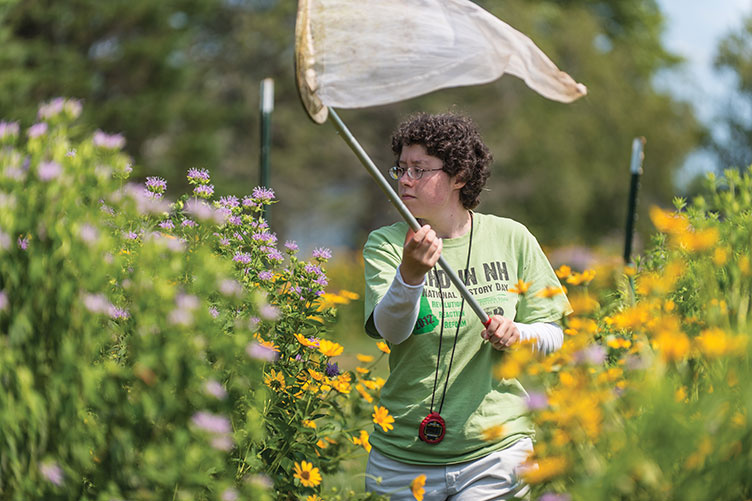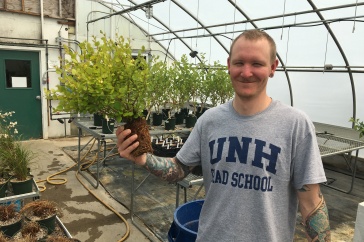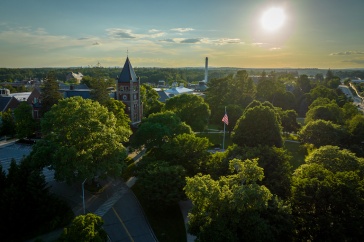
SUMMER SWEEP: Molly Jacobson ’17 collects bees as part of her 2016 Summer Undergraduate Research Fellowship (SURF) project examining the biodiversity and conservation of native pollinators in southern New Hampshire.
The buzz about New Hampshire’s bee population isn’t all bad. This spring, assistant professor of biological sciences Sandra Rehan and USDA research fellow Erika Tucker released the results of a first-ever assessment of the state’s native bee population. The assessment, published in the Journal of Insect Conservation, yielded a comprehensive list of the Granite State’s more than 100 native bee species, including nearly 20 species that had not been previously documented in the state.
Part of Rehan’s ongoing work to develop sustainable solutions to problems affecting bee health, the survey identified a broad diversity of species of wild bees in New Hampshire. “New Hampshire has a high bee species richness compared to similar biological surveys conducted in eastern North America,” says Rehan, who oversees the UNH Bee Lab. Her bee collection efforts recorded 118 species, more than a quarter of the total species currently found in the Northeast — if not more, given recent bee declines.
The most abundant species collected were sweat bees and common Eastern bumble bees — two bees Rehan terms keystone species for the state. As pollinators of food crops and natural ecosystems, bee species’ value to worldwide agriculture has been estimated at more than $200 billion; in the face of continued decline in the abundance and diversity of pollinators across the United States, Rehan emphasizes the importance of sweat bees and Eastern bumble bees to local agriculture. “While neither species visits the entire floral suite sampled in this study, the loss of one or both species could cause serious changes to the New Hampshire ecosystem,” she says.
Rehan and her lab are developing a database of 150 years of museum bee records to better understand the former ranges and population number for the more than 100 species identified. This will help determine the population stability — or lack thereof — of both common and endangered species, with the goal of restoring and rejuvenating bee habitats and increasing local bee populations. Going forward, the researchers plan to further study species at risk of extinction.
Rehan’s ecological assessment of the state’s bee population will reach its third year this summer. “These data, in combination with our ongoing collections and ecological modeling efforts, will provide unprecedented insights into the status and sustainability of bees in the region,” she says.
Originally published in UNH Magazine Fall 2016 Issue
-
Written By:
Lori Tyler Gula, PhD | NH Agricultural Experiment Station | lori.gula@unh.edu | 603-862-1452



















































